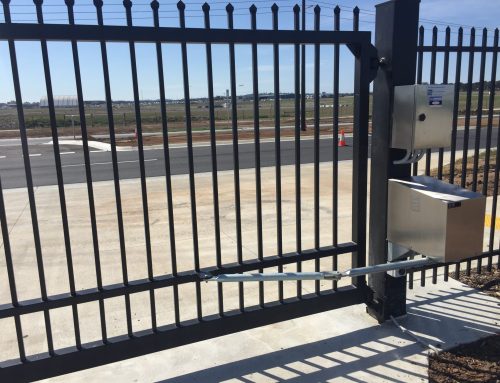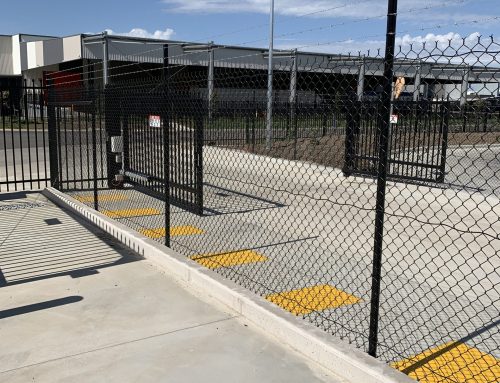Razor Wire Classification Doesn’t Have To Be Complicated
We’ve already talked about barbed wire classification, and now it’s razor wire classification’s turn. To keep it short and simple, as we did it with the barbed wire classification, we’ll just pay attention to the most important details when it comes to razor wire.
Let’s define razor wire. Razor wire has many names, but they all mean the same. For example if you hear people talking about barbed tape, then know that they simply mean razor wire. Or if you hear people mentioning concertina wire or Dannert wire, then they might mean barbed wire or razor wire, and that’s because wire, be it barbed or razor wire, is formed in large coils, which then can be expanded like a concertina. Most of the times when you hear concertina, then you righteously assume that the talk is about a small hand-held bellow-type instrument that belongs to the same family as the accordion. Paying attention to the context of the conversation it might come out that the talk was about razor wire instead.
Concertina wire is mostly used to form military-style wire obstacles, but it can also be used for non-military purposes like prison barriers, riot control, or a good example would be a quite actual political topic: at the US./Mexico border.
Historically, to be specific, during the World War I soldiers found manufacturing concertina wire amongst their duties. Nowadays it’s a much easier process, more automated, more factory produced.
During the war, barber wire and razor wire obstacles were created by stretching the wire between wooden or iron stakes. But quite quickly soldiers realised that those obstacles could be easily pushed about by artillery shells resulting in random entangled wires that were more daunting than the previously and carefully constructed obstacles. This is why soldiers deployed bared wire in concertinas. They were more loose and could be prepared in trenches and then taken transported relatively quickly where needed, even in the dark.
Now we have have several razor wire names cleared up, let’s look into what it actually means.
Razor wire is a mesh of metal strips that have sharp edges. When comparing razor wire to barbed wire, razor wire is the winner when it comes to sharpness. But the name razor sharp doesn’t mean literal razor sharpness. It is sharp, but not as sharp as the actual razor. What’s the purpose of having such a product like razor wire? It’s mainly for the security and to stop the passage by humans as its sharpness can rip clothing and, if very unfortunate, then even flesh.
Using razor wire for high-security applications, for example prisons, can prevent from human trespassing. Razor wire sharp edges can cause serious damages to human body, therefore its dangerous and warning looks can have a psychological effect that will keep those thoughts of trying to climb over, or underneath it, away. It’s true that with the right tools razor wire can be relatively quickly circumvented, but if you don’t have any tools at hand, let’s say if you are trying to escape the prison (hope not), then you shouldn’t have any tools at hand, so trying to penetrate razor wire without proper tools might take time and be very difficult!
Razor wire’s definition and applications are out of the way, let’s look into what we planned initially, and that is razor wire classification.
Availability:
1. Straight line
2. Spiral (helical) coils
3. Concertina (clipped) coils
4. Flat wrapped panels
Material:
1. Plain steel
2. Galvanized steel
3. Stainless steel
The shape of the barbs:
1. Short barb (10-12 mm long)
2. Medium barb (20-22 mm long)
3. Long barb (60-66 mm long)
Structure:
1. Helical type – no concertina attachments and each spiral loop is left, showing natural spiral freely.
2. Concertina type – the adjacent loops of helical coils are attached by clips at specified points on the circumference.
3. Blade type – straight line razor wire that is cut into certain length to then be welded onto the frame (galvanized or powder coated usually).
4. Welded type – razor wire that has been welded into panels that are then connected by clips or tie wires, forming one continuous razor fire fence.
5. Flattened type – single coil concertina razor wire. By flattening the concertina wire, you form a flat type razor wire.
Coil type:
1. Single coil
2. Double coil
COMMON SPECIFICATION OF RAZOR WIRE AS BELOW:
Razor wire classification/specification might come in handy, so thank you for sticking with us till the end of this blog post and learning a little bit more about razor wire.
If you have any specific questions about razor wire, barbed wire or any other fencing services, call Diamond Fence and our experienced fencing specialists will help you out!
Give us a call on (03) 9753 4566 , shoot us an email on info@diamondfence.com.au , or just get a FREE online fencing quote.








